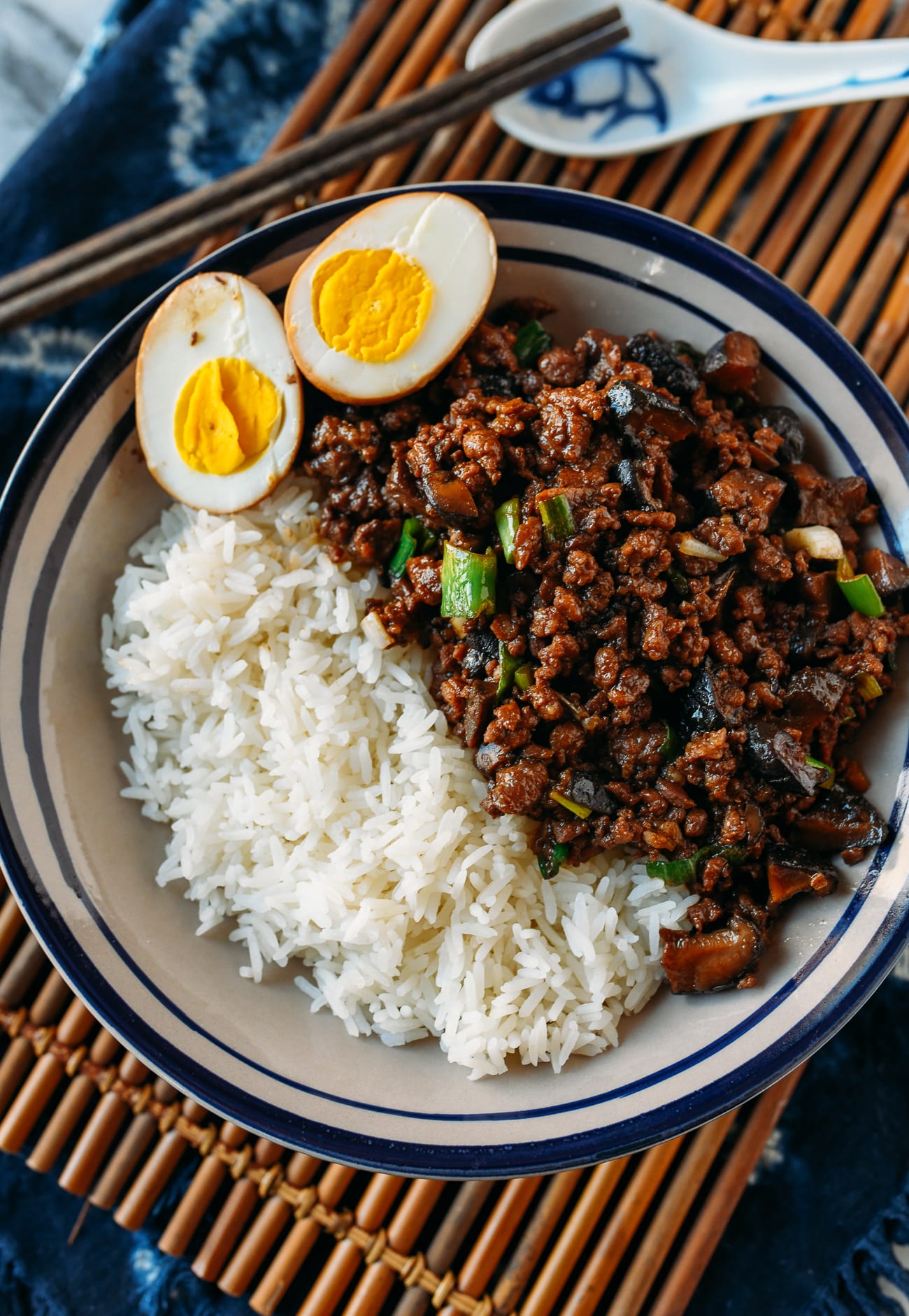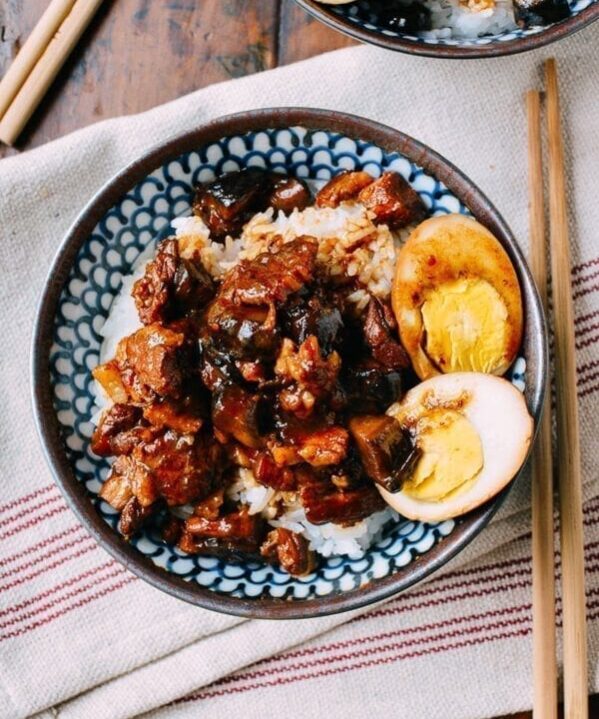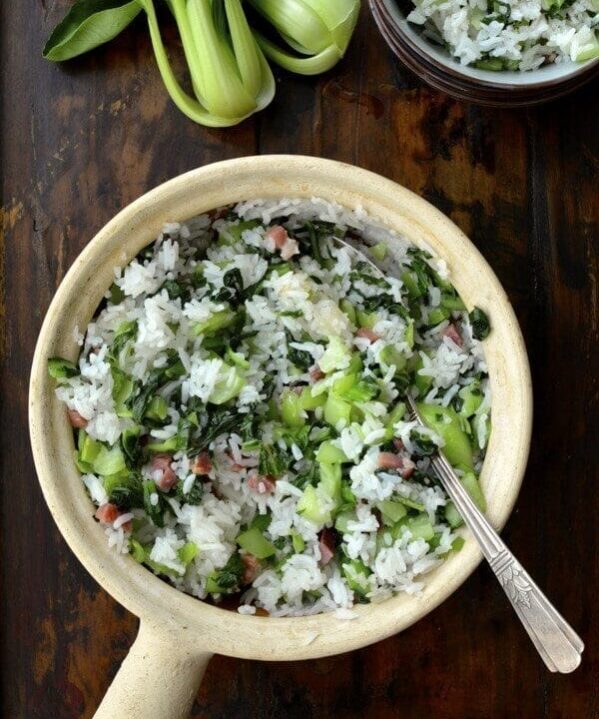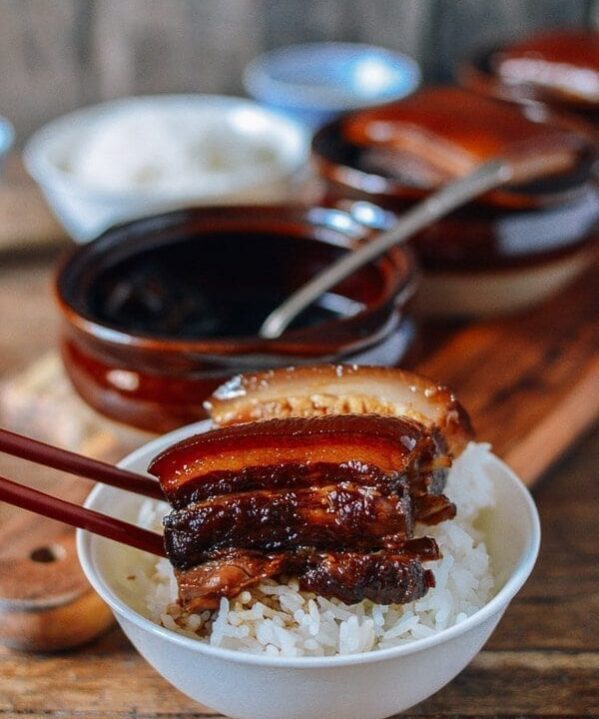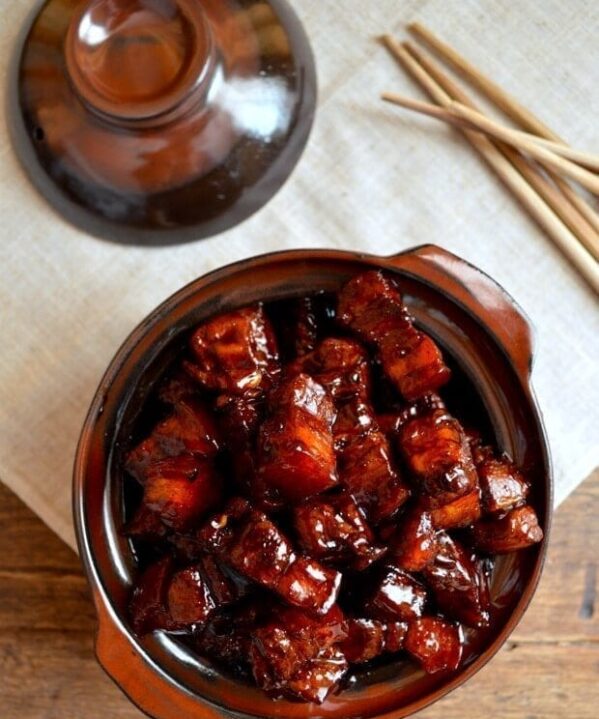If you love Hong Shao Rou (Red Braised Pork Belly) and Lu Rou Fan (Braised Pork over Rice), you will love Rou Zao Fan (肉燥饭), or Taiwanese Braised Minced Pork Over Rice, even more. It has the same great flavors, but uses ground pork instead of pork belly.
Not only is ground pork more readily available, it requires a bit less preparation and cooks faster.
A Mellow, Rich Pork Dish
Some people think Rou Zao Fan is the same as Lu Rou Fan. Not quite! This Taiwanese Braised Minced Pork is actually much easier to make and requires fewer aromatic spices. The dish has a mellower taste, closer to Hong Shao Rou.
It’s yummy beyond words, and for anyone watching their fat intake, there’s significantly less calories involved in this version than in braised hong shao rou, which uses pork belly.
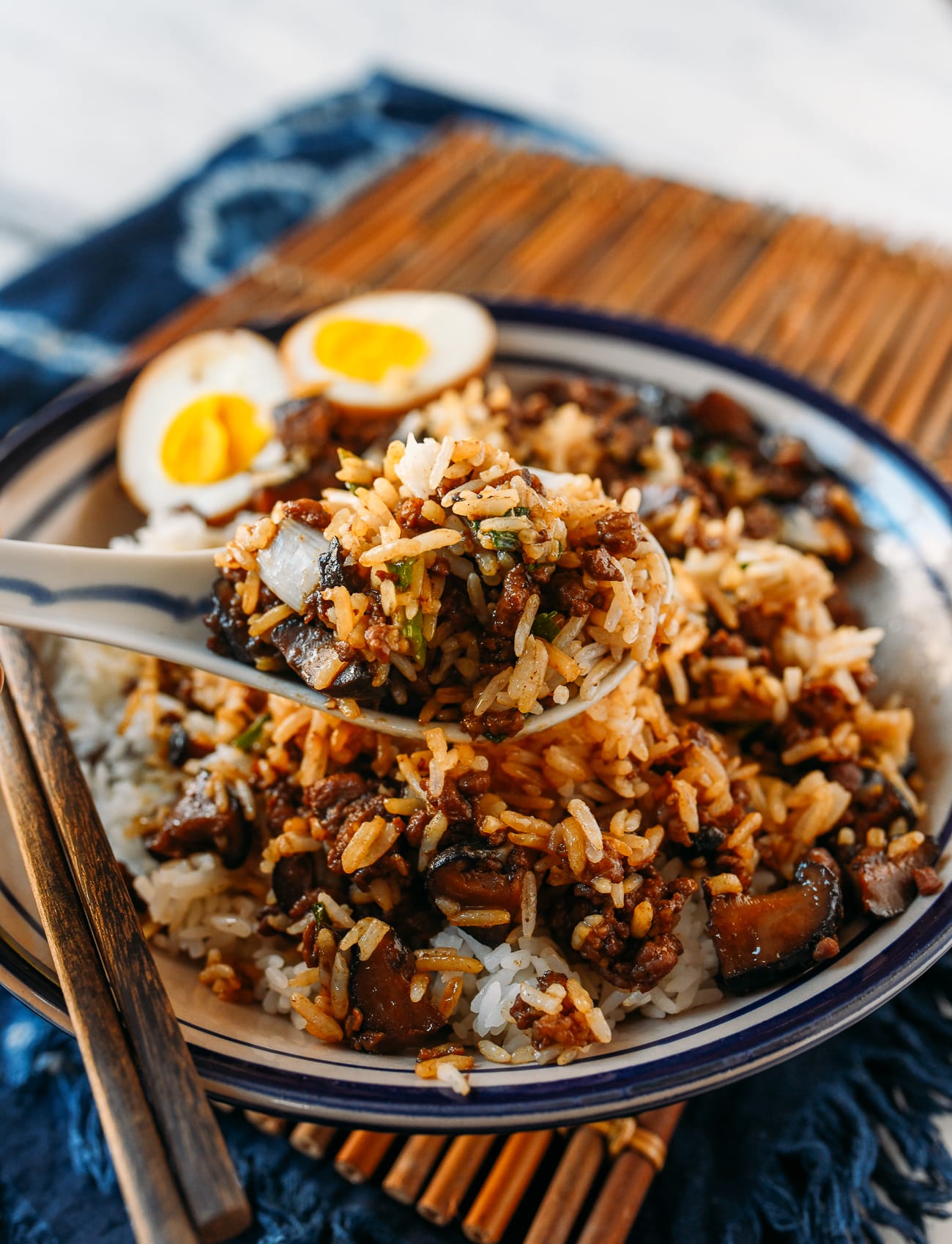
What’s the Difference?
There are many similarities between Rou Zao Fan, Hong Shao Rou, and Lu Rou Fan. They all apply the same basic principles of braising meat with soy sauce, Shaoxing wine, and plenty of rock sugar to achieve that glossy finish.
They’re also each such beloved staples of home cooking. Families adapt recipes to suit their own tastes.
Outside of home kitchens, they’re so popular that restaurants, fast food chains and food courts, regardless of region or province, include them on their menus.
Lastly, they’re each so delicious, I know you’ll be back to make these recipes more than just once or twice!
While there are plenty of similarities, the differences lie in the ratios of sugar, soy sauce, and Shaoxing wine, as well as the aromatics used. They’re also written to suit the cut of meat used and the size it is cut into.
Tip!
While buying fatty ground pork from the butcher is the easiest way to prepare this dish, you can also start with a piece of marbled pork shoulder or pork butt, and chop it by hand with a cleaver. This yields a superior texture and meatier mouthfeel. We have a complete step-by-step in our How to Grind Meat Without a Grinder tutorial.
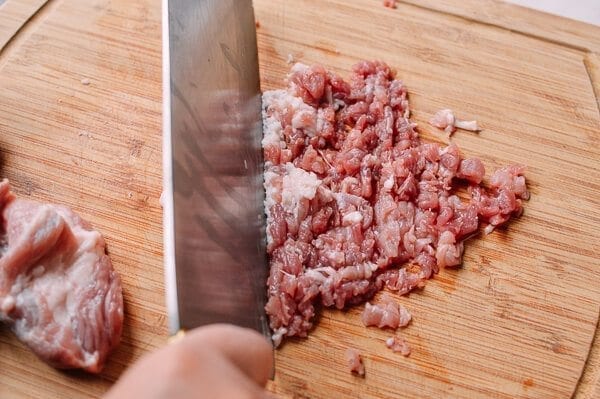
Rou Zao Fan: Recipe Instructions
To rehydrate the dried shiitake mushrooms, rinse them of any dust and soak them in hot water for at least 2 hours (or overnight). Squeeze out the liquid, and dice into ¼ inch pieces. Set aside the soaking liquid (you will use it later in the recipe).
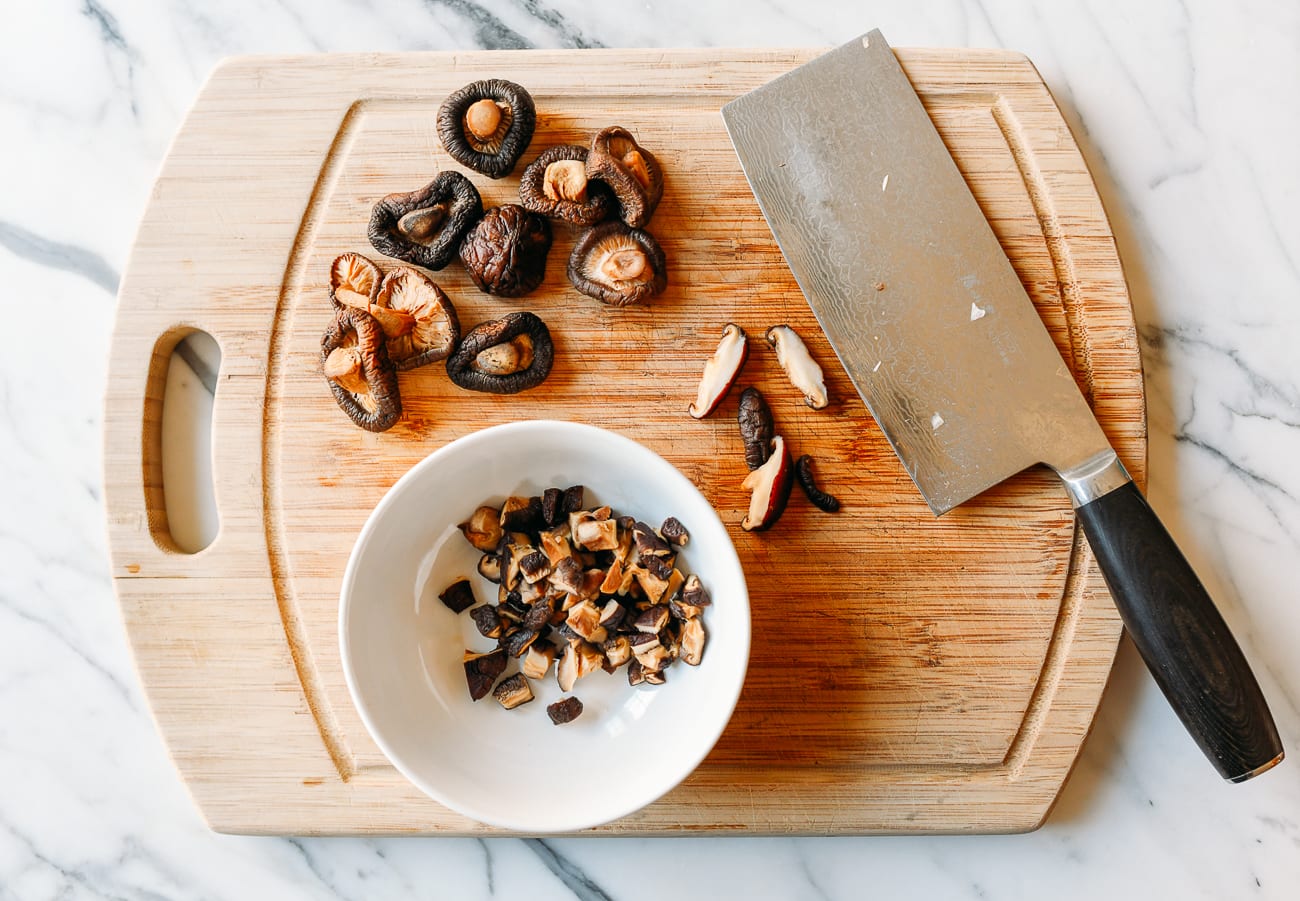
If desired, use our hand-chopped meat technique to chop a 1 pound piece of pork shoulder/butt. This will yield the best texture. Store-bought ground pork is also fine.
Heat 2 tablespoons of oil in a wok or large skillet over medium heat. Add the ginger…
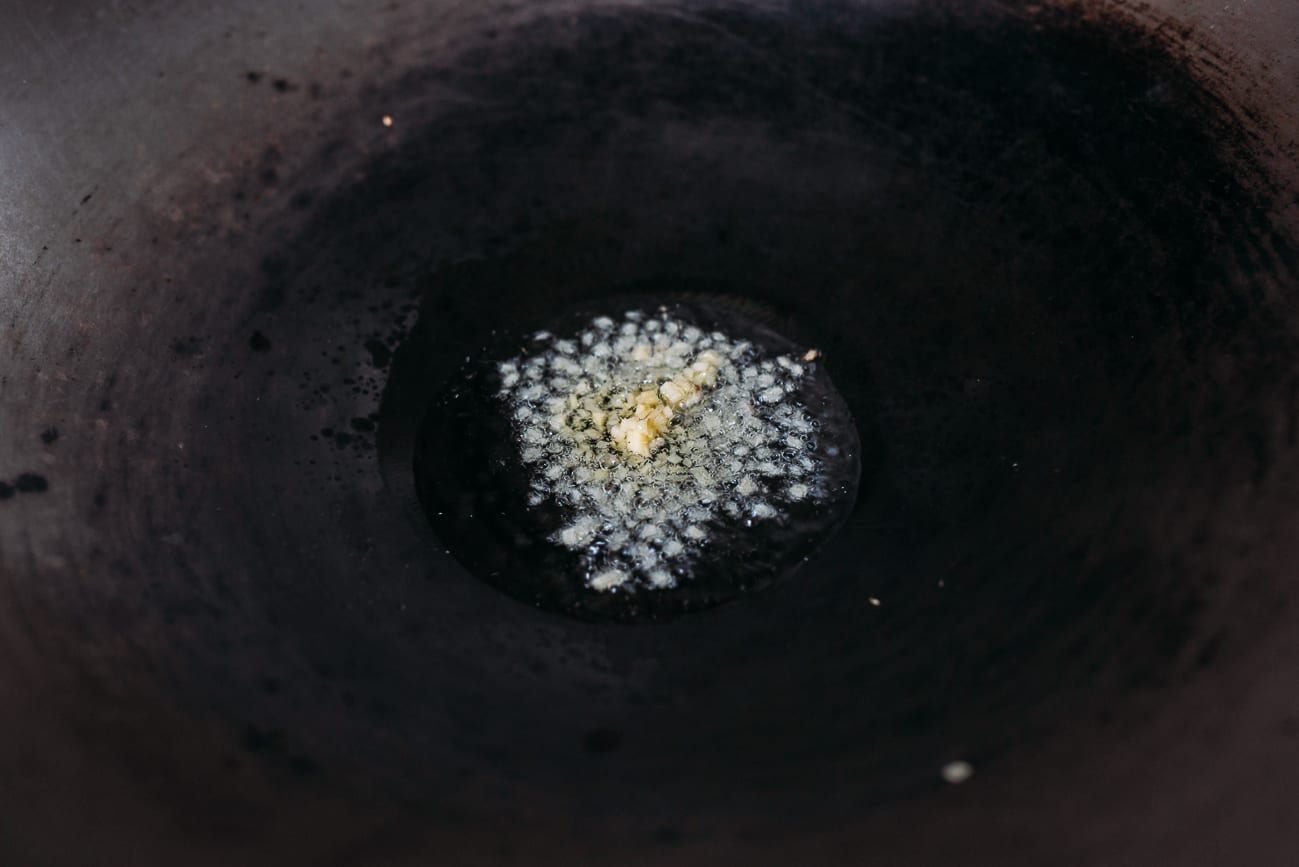
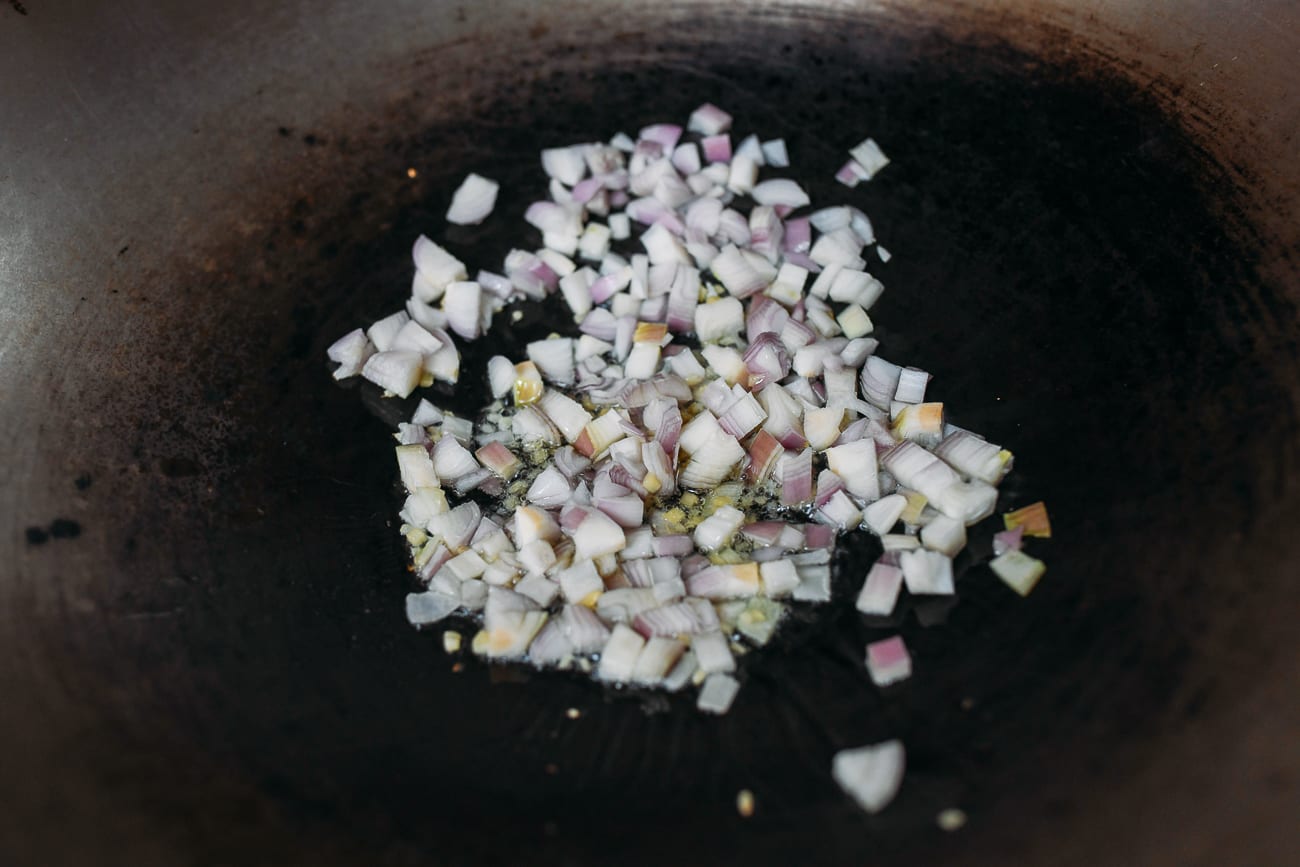
And the shallots.
Cook the ginger and shallots for 1-2 minutes, or until the shallots turn translucent.
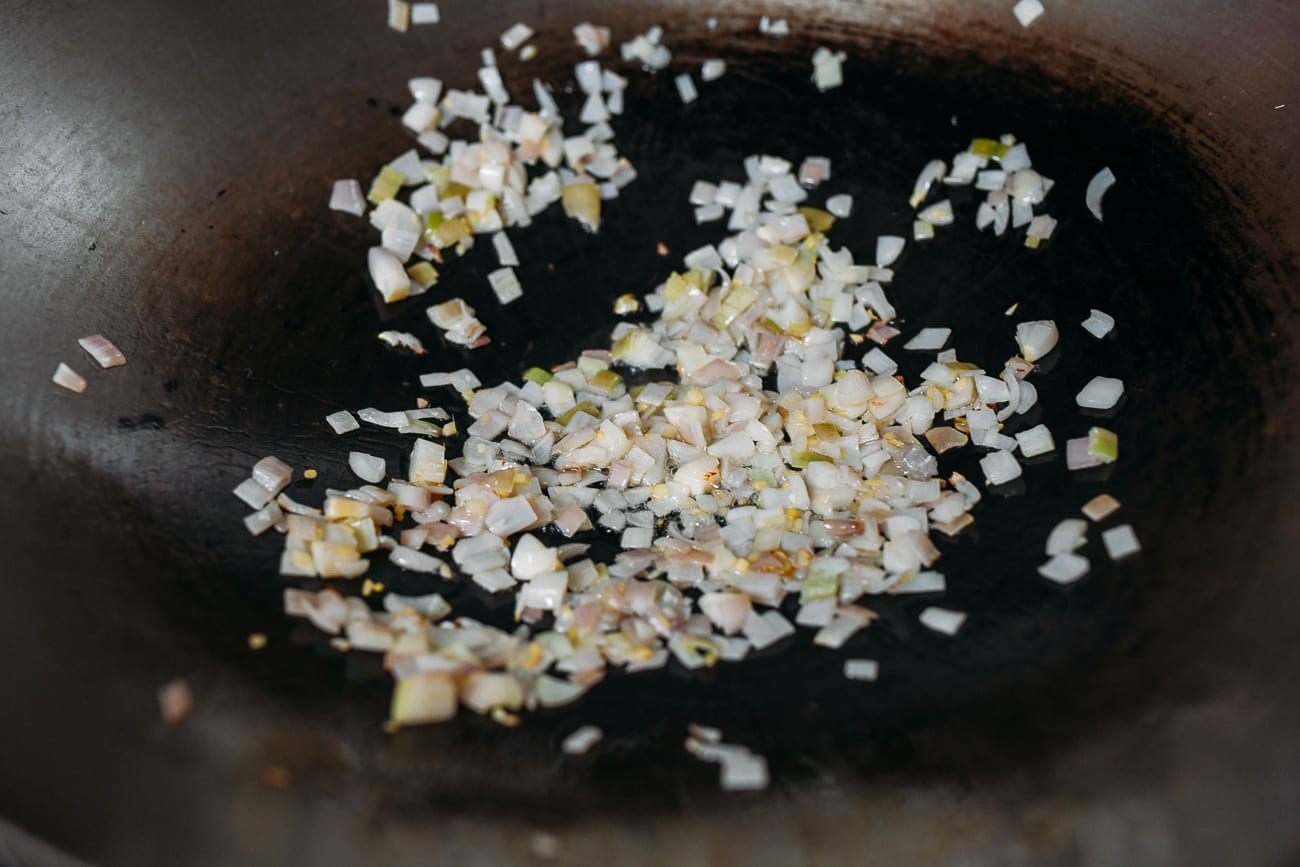
Stir in the mushrooms, and cook for 2 minutes.
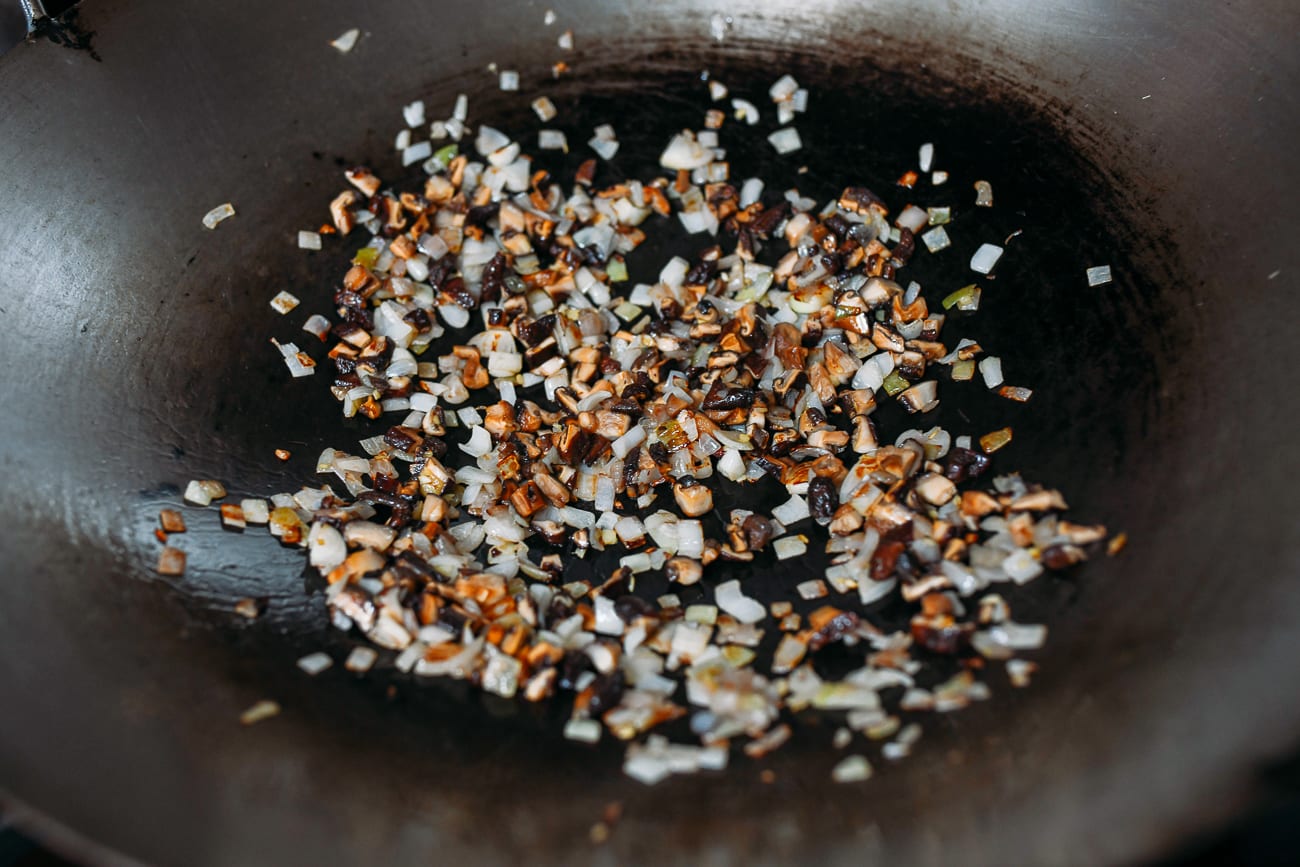
Increase the heat to high. Add 1 additional tablespoon of oil, along with the ground pork and star anise.
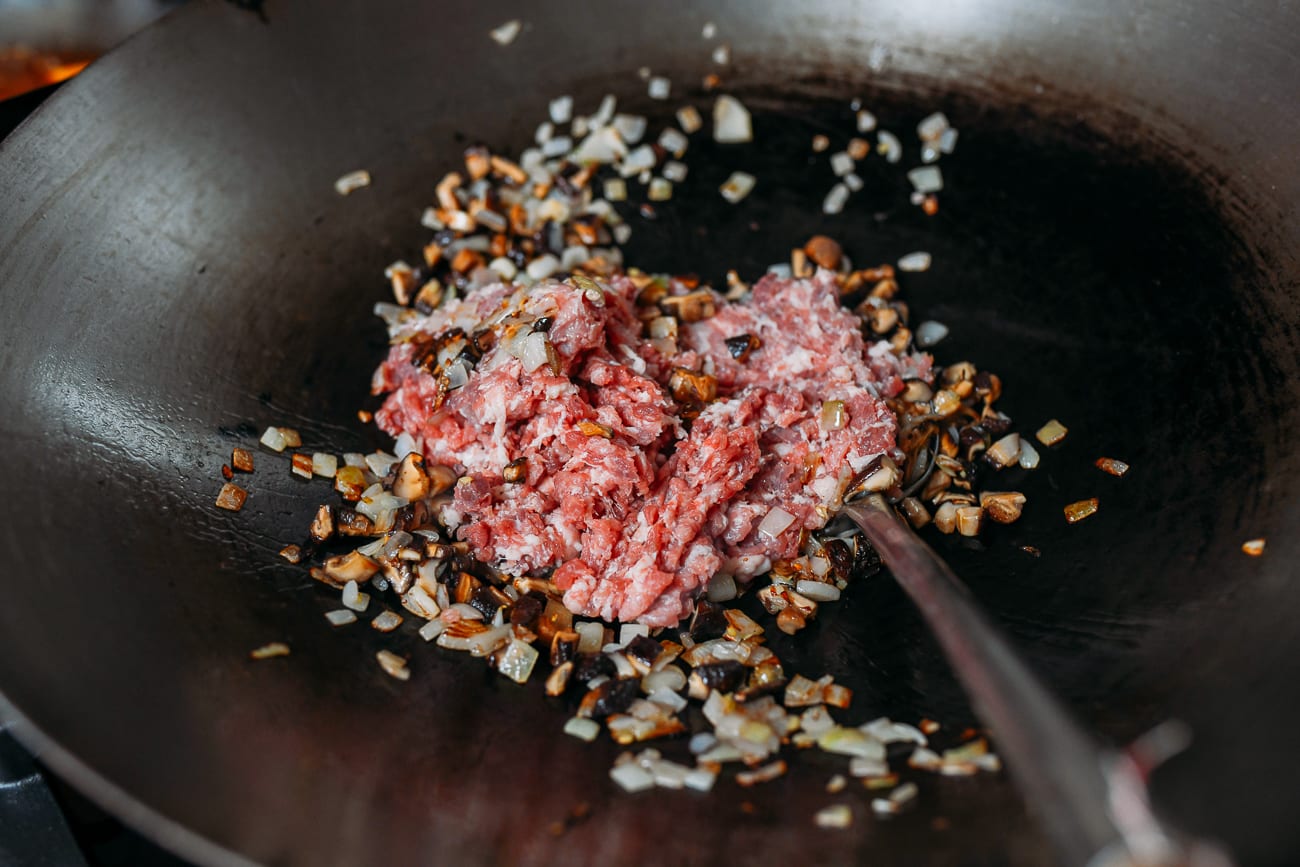
Cook until the meat is opaque.
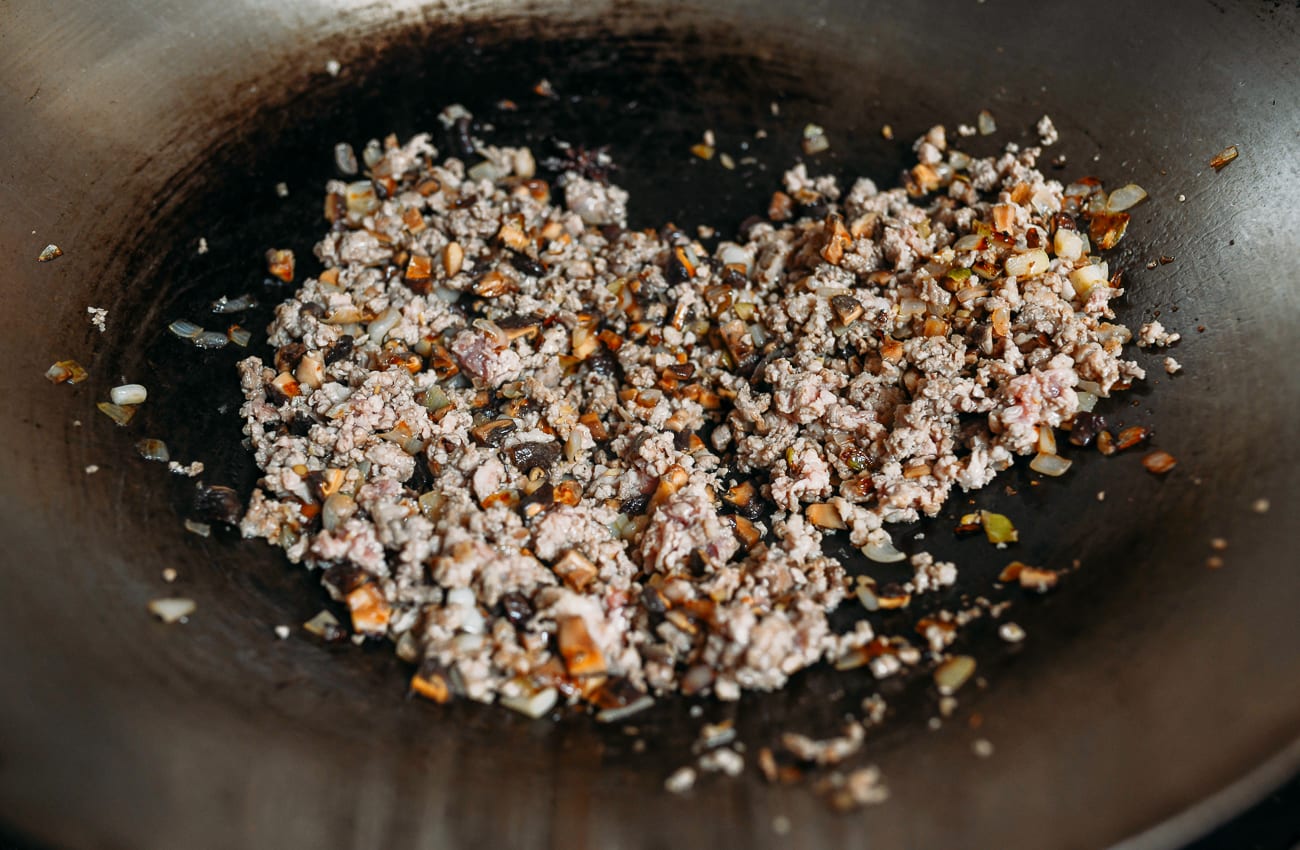
After cooking the pork, stir in the Shaoxing wine to deglaze the wok or pan. Add the rock sugar (or sugar), light soy sauce, dark soy sauce, oyster sauce, white pepper, five spice powder, and 2 cups of water (including the mushroom soaking water. Just be sure to leave behind any sediment from soaking the mushrooms).
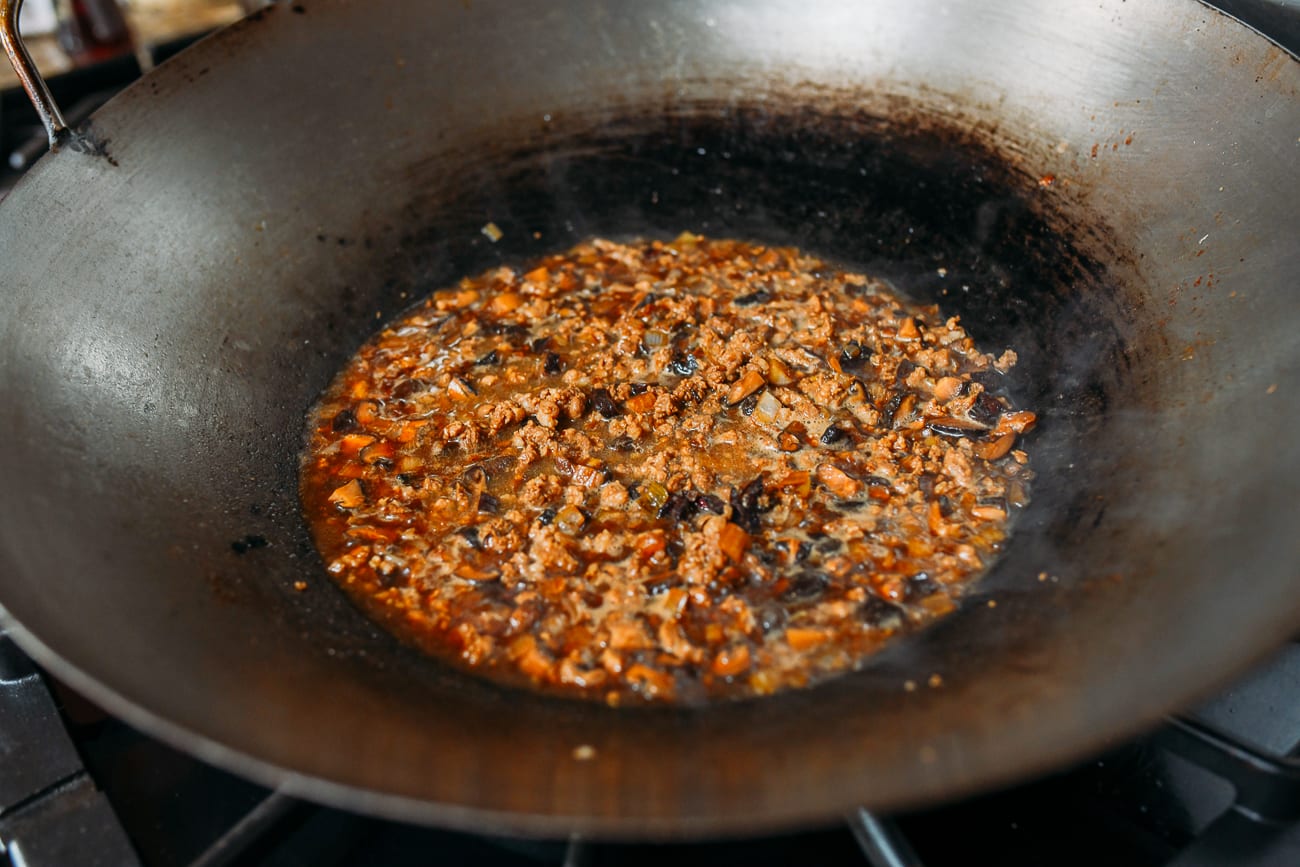
Bring to a boil. Once boiling, cover, reduce the heat to medium/medium-low, and simmer for 20 minutes.
Meanwhile, hard-boil the eggs. Bring a medium pot of water to a rolling boil. Gently lower the eggs into the water using a large spoon, taking care not to break the shells. Boil rapidly for 30 seconds, and then reduce the heat to low. Cover, and simmer the eggs for 10 minutes. Remove to a bowl of ice water.
When the eggs are cool to the touch, peel them and rinse them under running water.
After the pork has simmered for 20 minutes, add the eggs to the mixture, making sure they’re at least 2/3 submerged in the sauce. At this point, you may need to add another ½ cup to 1 cup of water to ensure there’s enough liquid to submerge the eggs.

Cover and simmer the mixture for an additional 10 minutes.
Uncover the wok. If the sauce is too thin, turn up the heat to medium high, and reduce it down, stirring carefully so as not to break the eggs.
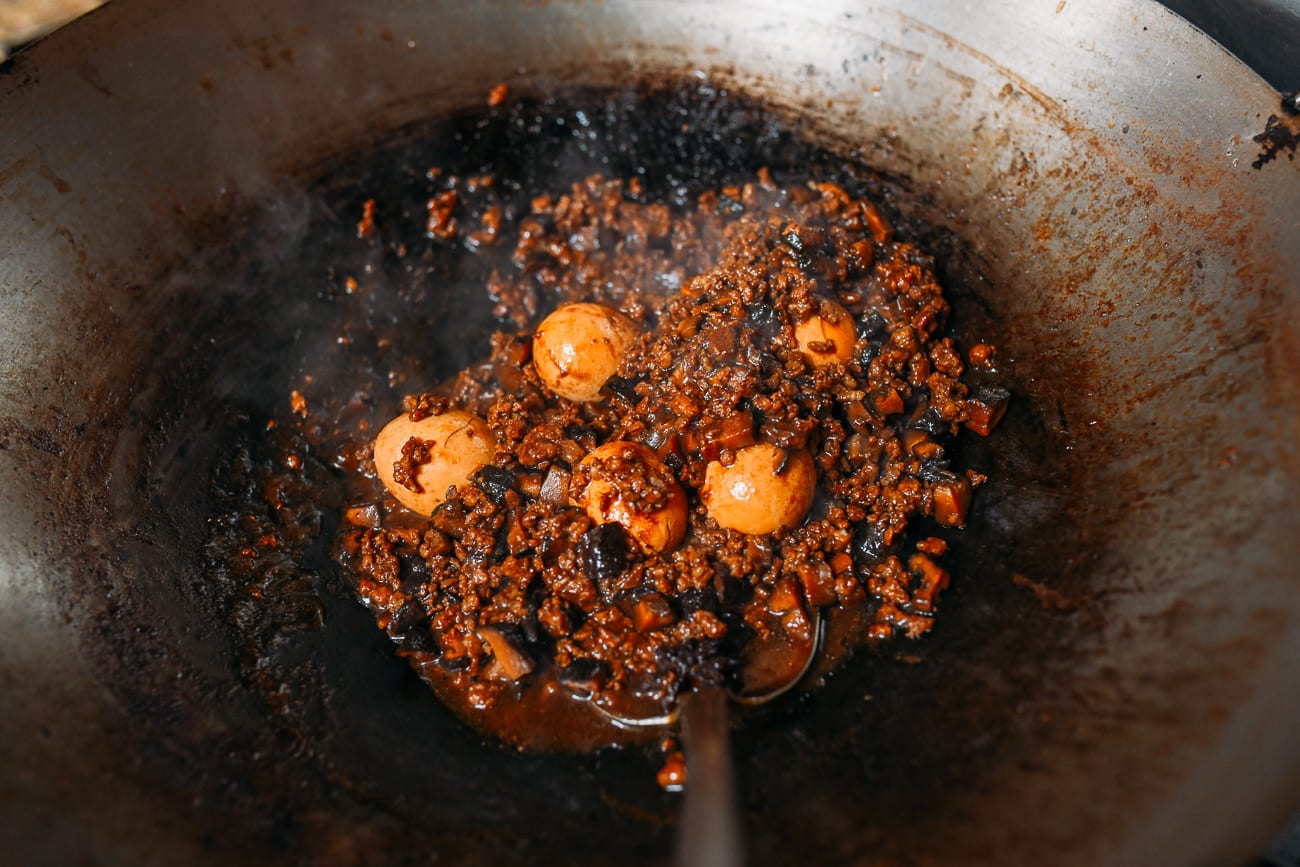
Stir in the scallions and salt to taste.
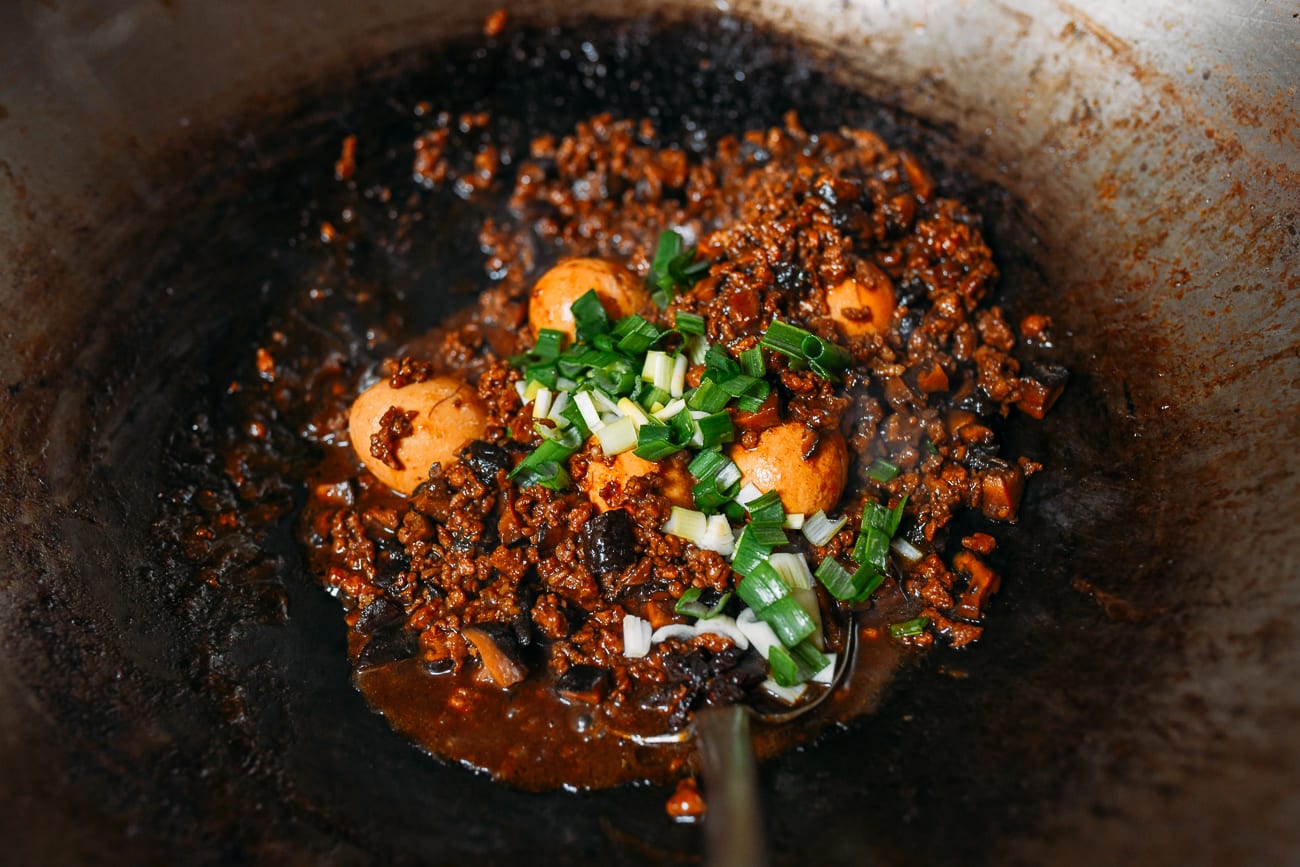
To serve, give each person one egg (cut in half if desired) and ladle the pork over rice.
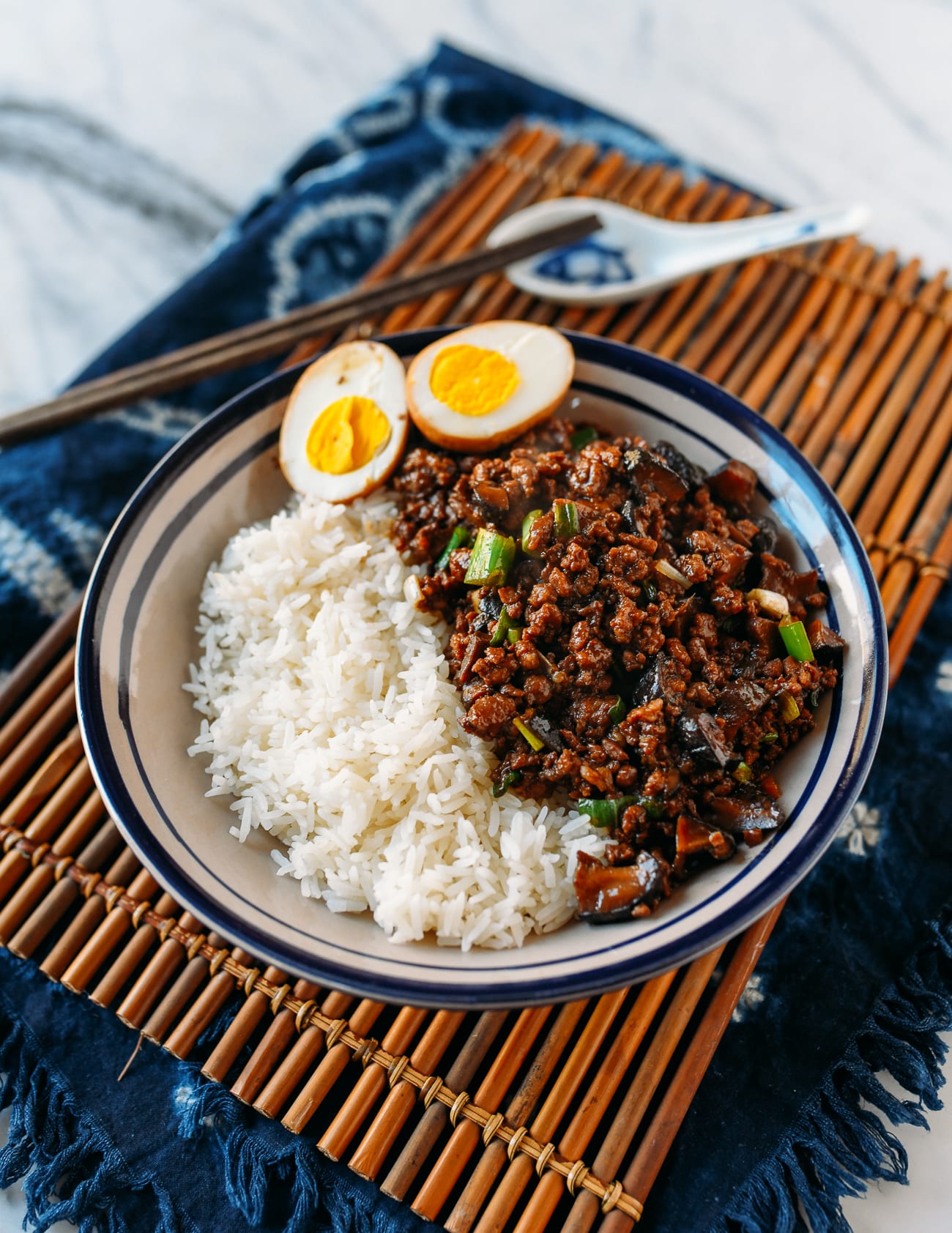
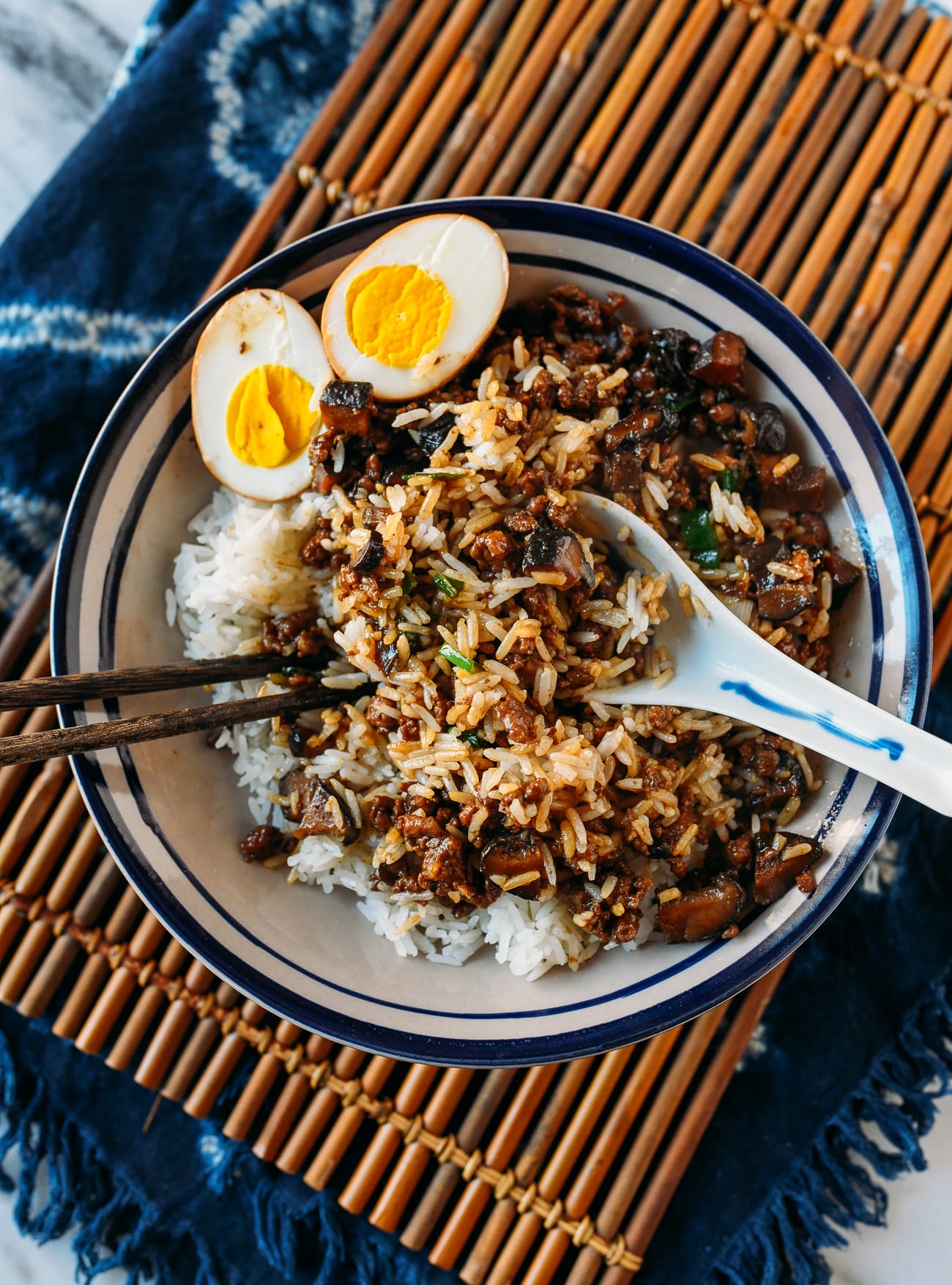
Taiwanese Braised Minced Pork Over Rice (肉燥饭)
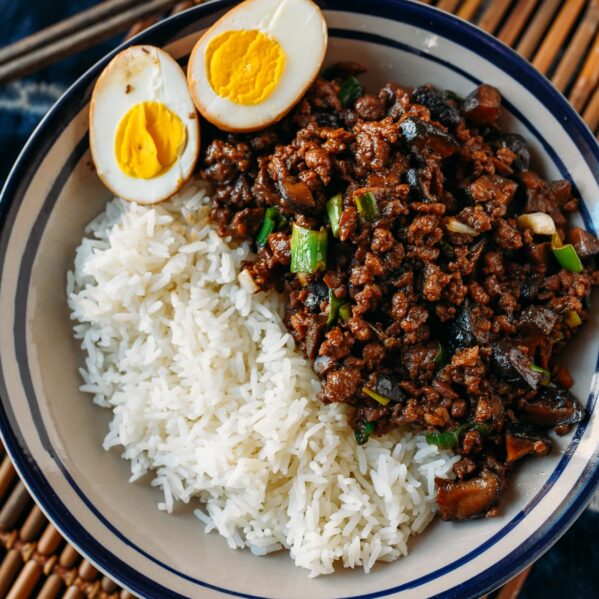
Ingredients
- 1 1/2 ounces dried shiitake mushrooms
- 1 pound ground pork (hand-chopped pork shoulder or pork butt is ideal)
- 3 tablespoons oil (any neutral flavored oil, such as vegetable or canola oil)
- 1 tablespoon ginger (minced)
- 1 cup shallots (finely diced)
- 2 star anise
- 3 tablespoons Shaoxing wine
- 0.5 ounce rock sugar (or 1 tablespoon granulated sugar)
- 2 tablespoons light soy sauce
- 1 tablespoon dark soy sauce
- 1 tablespoon oyster sauce
- 1/2 teaspoon ground white pepper
- 1/4 teaspoon five spice powder
- 2-3 cups water (including shiitake mushroom soaking water)
- 5 eggs
- 1/4 cup scallions (chopped, white and green parts)
- salt to taste (optional, likely not needed)
Instructions
- To rehydrate the dried shiitake mushrooms, rinse them of any dust and soak them in hot water for at least 2 hours (or overnight). Squeeze out the liquid, and dice into ¼ inch pieces. Set aside the soaking liquid (you will use it later in the recipe).
- If desired, use our hand-chopped meat technique to chop a 1 pound piece of pork shoulder/butt. This will yield the best texture. Store-bought ground pork is also fine.
- Heat 2 tablespoons of oil in a wok or large skillet over medium heat. Cook the ginger and shallots for 1-2 minutes, or until the shallots turn translucent. Stir in the mushrooms, and cook for 2 minutes.
- Increase the heat to high. Add 1 additional tablespoon of oil, along with the ground pork and star anise. Cook until the meat is opaque.
- When the pork is cooked, stir in the Shaoxing wine to deglaze the wok or pan. Add the rock sugar (or sugar), light soy sauce, dark soy sauce, oyster sauce, white pepper, five spice powder, and 2 cups of water (including the mushroom soaking water. Just be sure to leave behind any sediment from soaking the mushrooms).
- Bring to a boil. Once boiling, cover, reduce the heat to medium/medium-low, and simmer for 20 minutes.
- Meanwhile, hard-boil the eggs. Bring a medium pot of water to a rolling boil. Gently lower the eggs into the water using a large spoon, taking care not to break the shells. Boil rapidly for 30 seconds, and then reduce the heat to low. Cover, and simmer the eggs for 10 minutes. Remove to a bowl of ice water. When the eggs are cool to the touch, peel them and rinse them under running water.
- After the pork has simmered for 20 minutes, add the eggs to the mixture, making sure they’re submerged in the sauce. At this point, you may need to add another ½ cup to 1 cup of water to ensure there’s enough liquid to submerge the eggs. Cover and simmer the mixture for an additional 10 minutes.
- Uncover the wok. If the sauce is too thin, turn up the heat to medium high, and reduce it down, stirring carefully so as not to break the eggs.
- Stir in the scallions and salt to taste. To serve, give each person one egg (cut in half if desired) and ladle the pork over rice.
